The AgriBusiness Global Trade Summit Makes Triumphant Return

After a long hiatus, buyers and sellers of crop inputs from across the globe returned to the annual event, which was held at the JW Marriott Miami Turnberry Resort & Spa in Aventura, Fla.
Scroll Down to Read
-
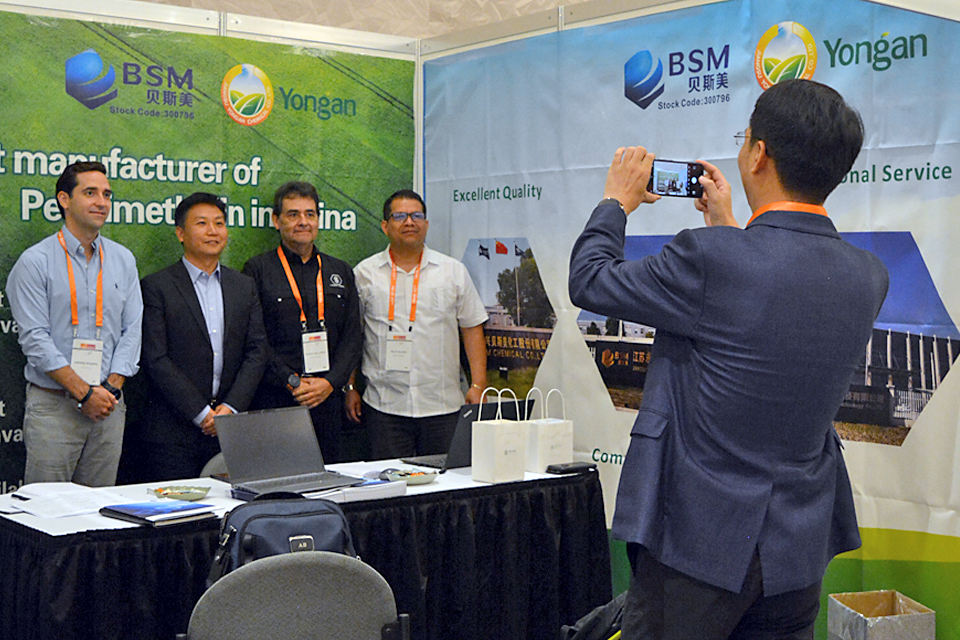
-
1 of 20
Trade Summit 2023
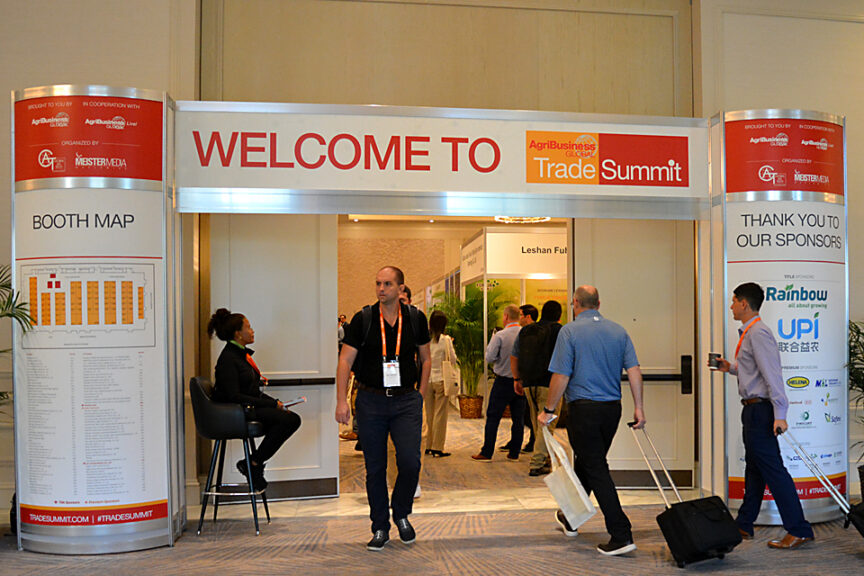
Attendees are welcomed to the AgriBusiness Global Trade Summit floor with more than 90 exhibitors at the JW Marriott Turnberry Convention Center in Aventura, Fla.
-
2 of 20
Trade Summit 2023
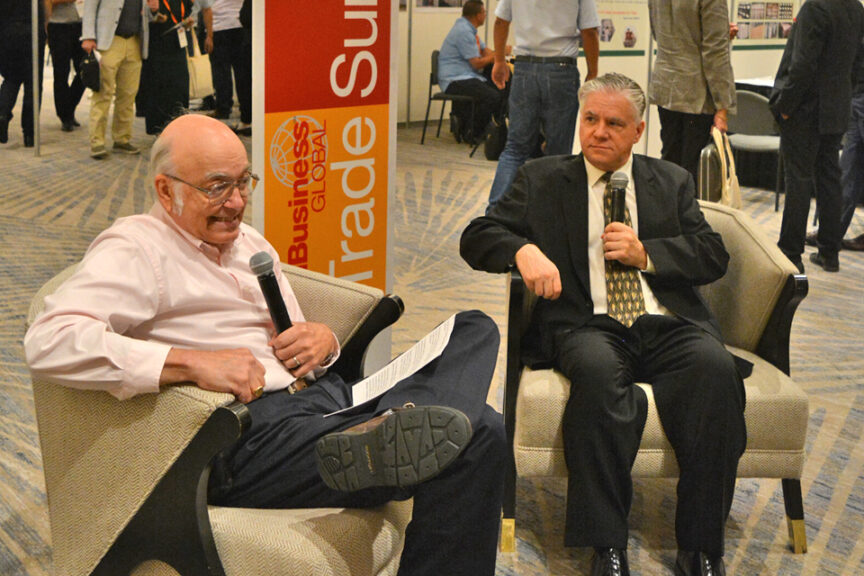
Eric Sfiligoj, Editor for CropLife, and Jim DeLisi, President of Fanwood Chemical, share insights during the Linkedin Live broadcast on 9 August from the AgriBusiness Global Trade Summit exhibit floor.
-
3 of 20
Trade Summit 2023
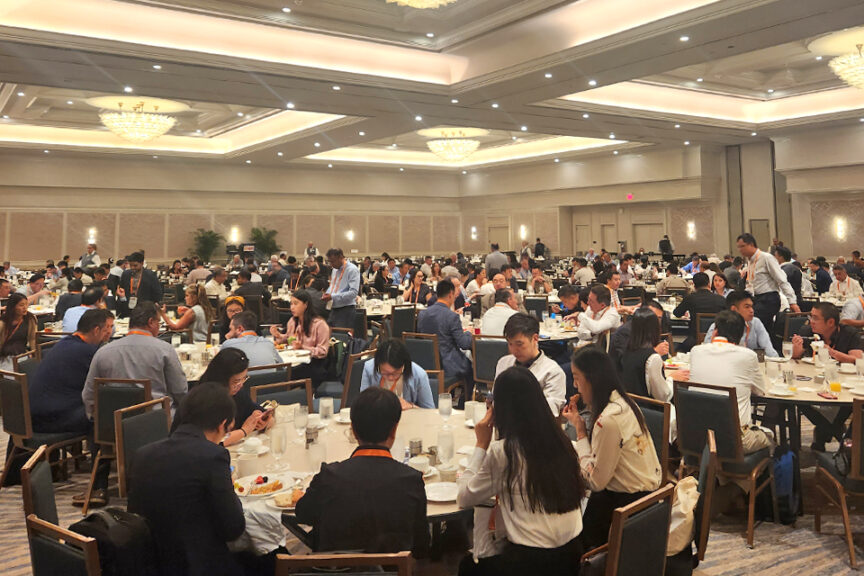
AgriBusiness Global Trade Summit attendees met for breakfast and reconnected with colleagues before starting a day of business meetings.
-
4 of 20
Trade Summit 2023

Renee Targos, Editor for AgriBusiness Global interviewed Stephen Pearce, Co-Founder and Managing Partner for Chemovateq Swiss AG Investments about investments in biological companies during Linkedin Live broadcast on 9 August on Trade Summit exhibit floor.
-
5 of 20
Trade Summit 2023
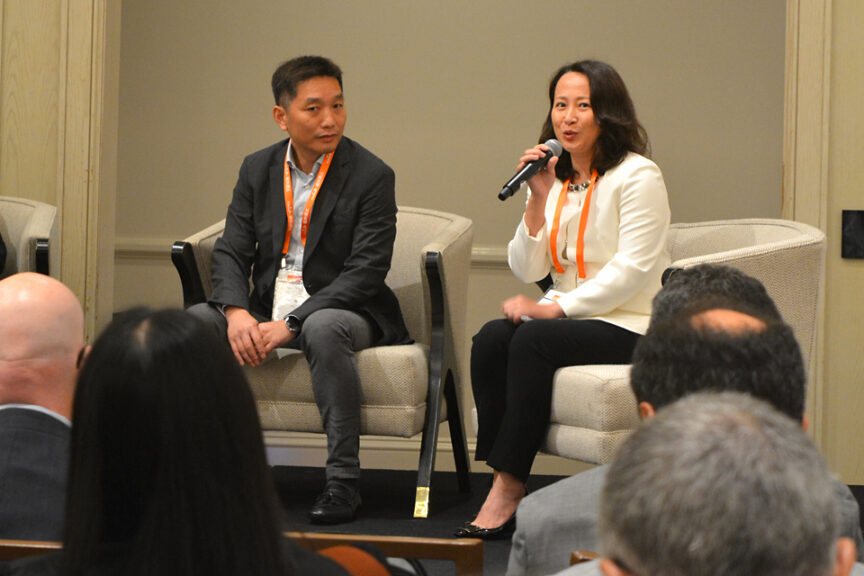
To kick off the sessions, Renee Targos, Editor of AgriBusiness Global, (not shown in photo) interviewed three panelists for the China Update on 9 August. The panelists included: David Li, Marketing Director of SPM Biosciences (not shown in photo), Norman Wu, (on left) Commercial Vice President for CAC Nantong Chemical Co., Ltd., and Adrienne Chang (on right), General Manager, International Business for Sino-Agri Leading Biosciences, Ltd.
-
6 of 20
Trade Summit 2023
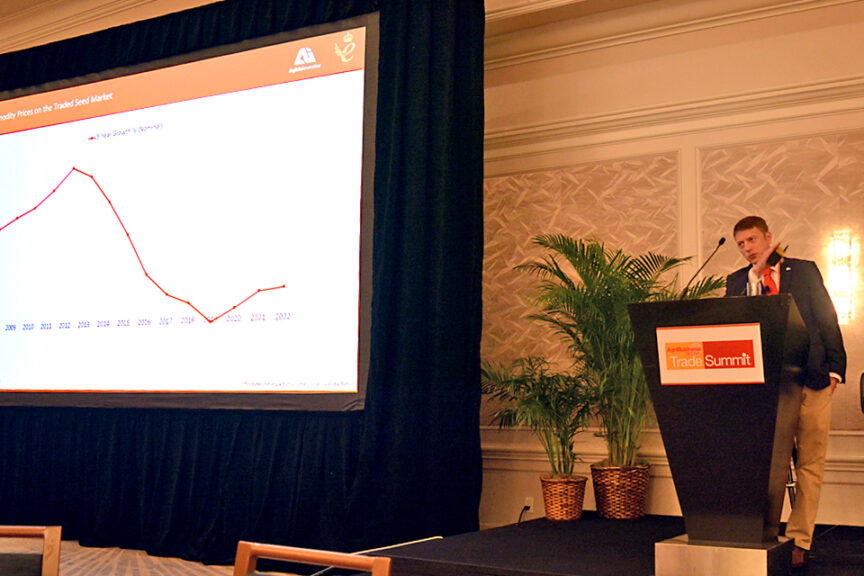
Keynote Speaker Allister Phillips, Co-Founder of AgbioInvestor, presenting with AgbioInvestor Co-Founder Derek Oliphant (not shown in photo) their keynote presentation, Recent Developments and Future Outlook for the Crop Protection and Seed Industries, during the opening of the AgriBusiness Global Trade Summit on 9 August.
-
7 of 20
Trade Summit 2023

Attendees taking a break from business meetings to listen to afternoon panel discussions on AgriBusiness Global Trade Summit exhibit floor.
-
8 of 20
Trade Summit 2023
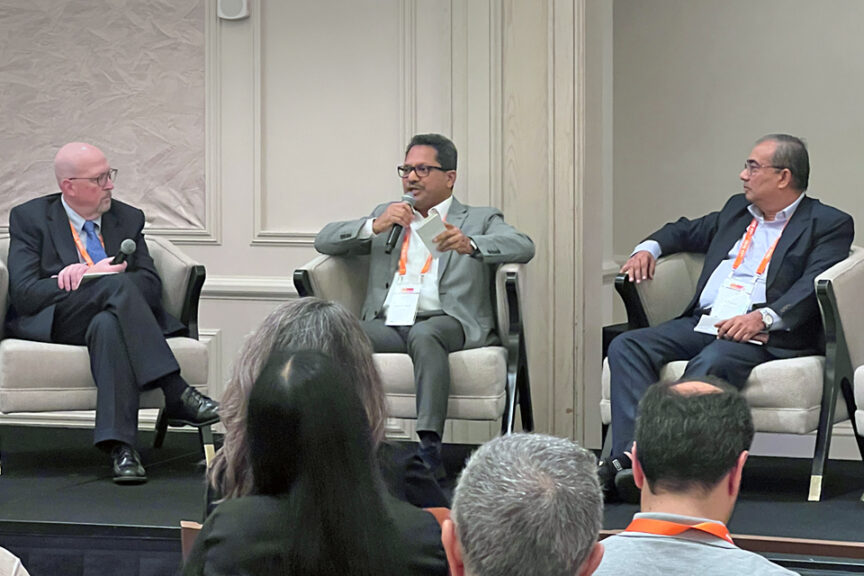
Abhijit Bose, Chief Marketing Officer for Tagros, shares his perspective during India Update panel discussion, joined by (on far right) Narayanan Nair, Head of International Sales and Marketing for Gharda Chemicals Limited, moderated by (on far left) Dan Jacobs, Senior Editor for AgriBusiness Global on 9 August.
-
9 of 20
Trade Summit 2023
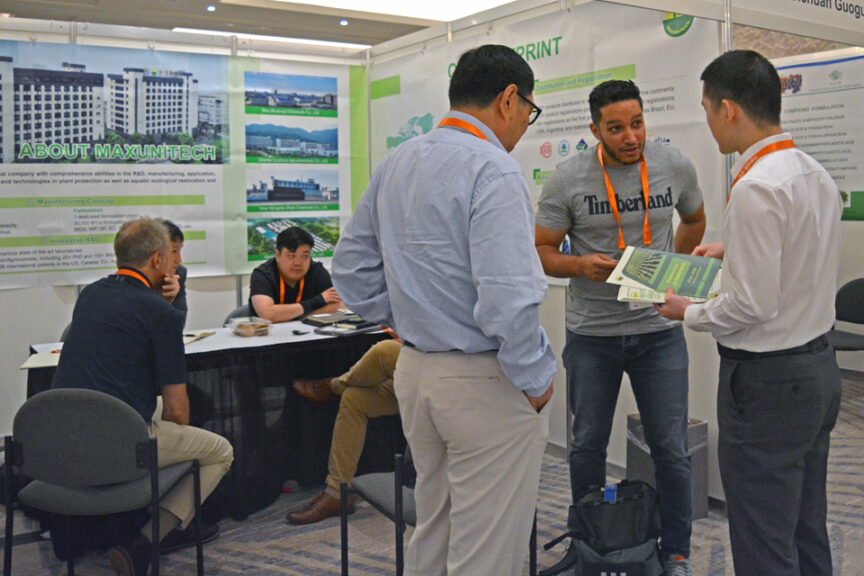
Attendees met and visited with colleagues, like at the Maxunitech booth, and networked to create business contacts for the upcoming year.
-
10 of 20
Trade Summit 2023

The AgriBusiness Global Trade Summit booths created a good space to hold meetings throughout the day with prospective clients.
-
11 of 20
Trade Summit 2023

IPR Chemicals staff met with Lapisa representatives Mauricio Turrent (second from left) and Myrla Maya (next to Turrent).
-
12 of 20
Trade Summit 2023
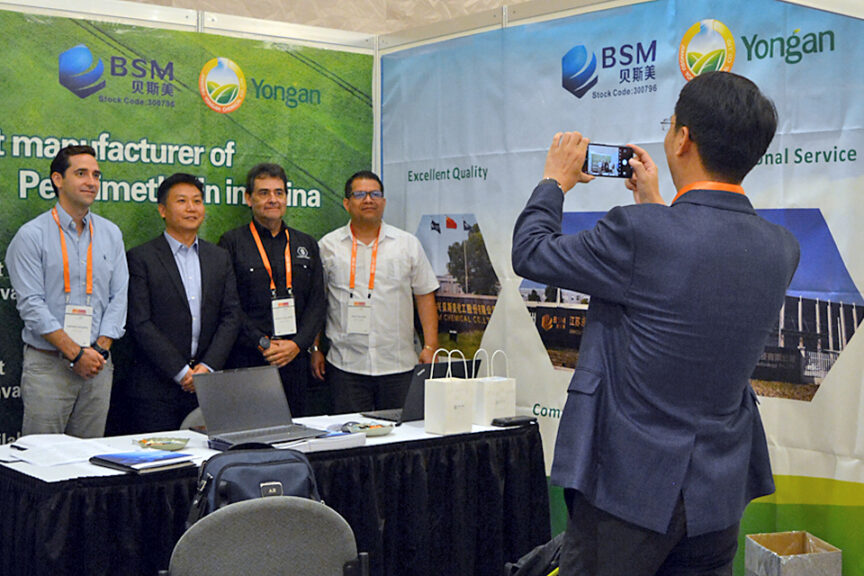
Attendees stop to take a group shot at the BSM Chemical Co. and Jiangsu Yongan Chemicals booth.
-
13 of 20
Trade Summit 2023

Attendee stopping by Tafirel booth to network with Tafirel staff.
-
14 of 20
Trade Summit 2023
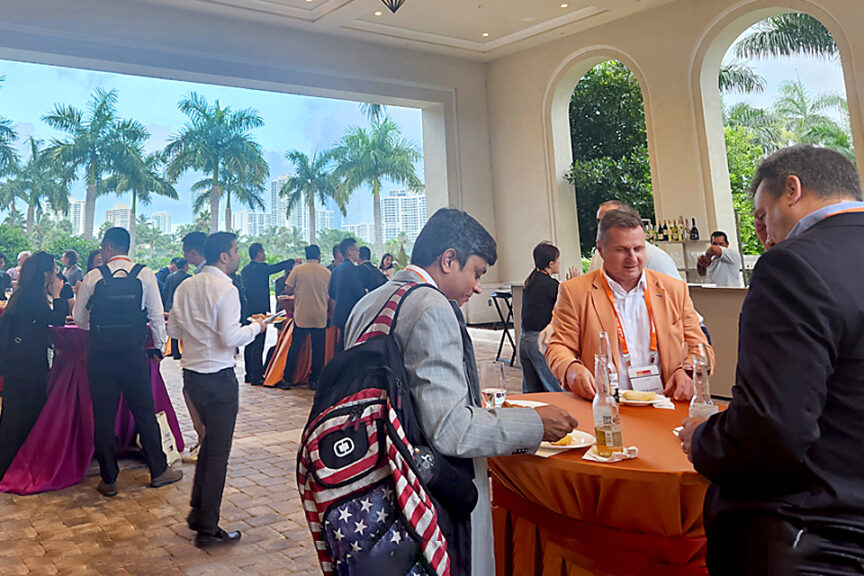
After a long day of business meetings, AgriBusiness Global Trade Summit attendees stopped for two hours of appetizers and drinks at the cocktail reception on 9 August at Port Cochere patio in the JW Marriott Turnberry Convention Center.
-
15 of 20
Trade Summit 2023
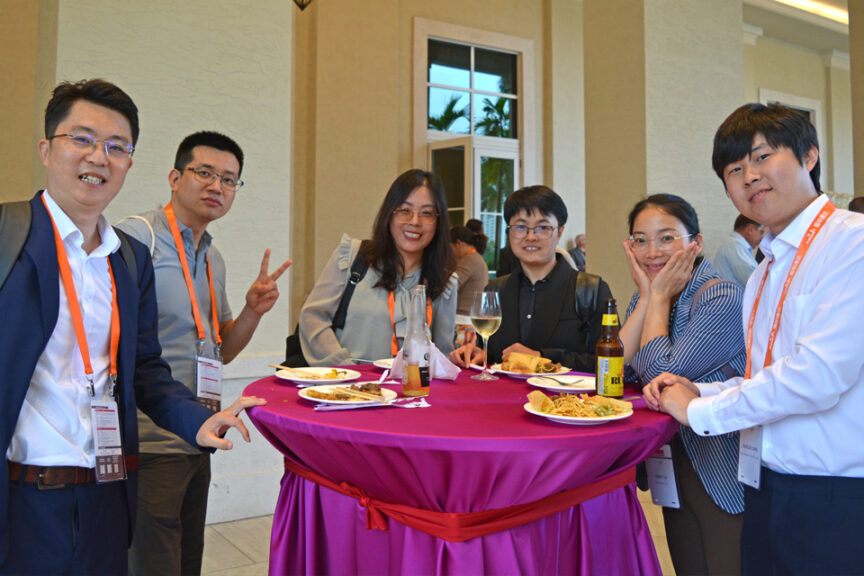
Attendees enjoying great food and company during the cocktail reception on 9 August.
-
16 of 20
Trade Summit 2023
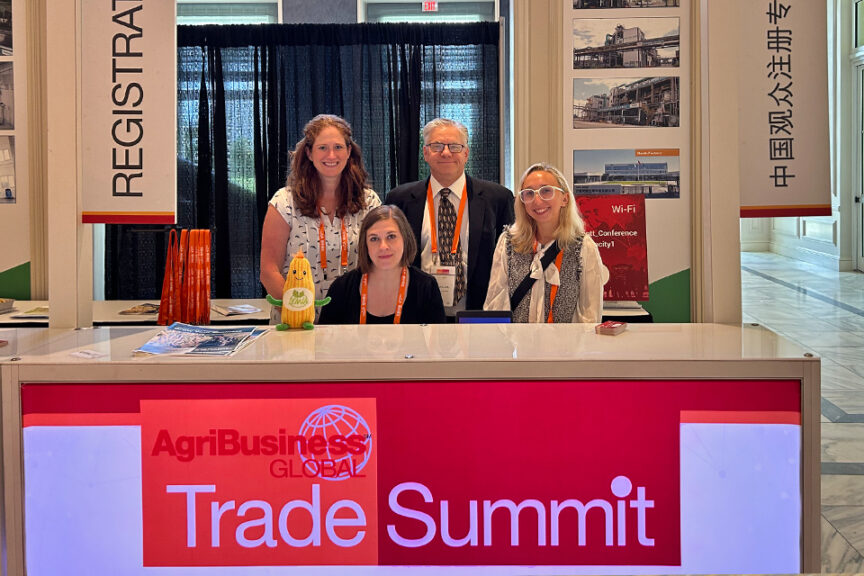
Lauren Lewis, Corporate Director of Events for Meister Media Worldwide, Eric Sfiligoj, Editor for CropLife, Courtney Marshall, Events Assistant for Meister Media Worldwide, and Michele Katsaris, Managing Editor, AgriBusiness Global, working at the registration desk.
-
17 of 20
Trade Summit 2023
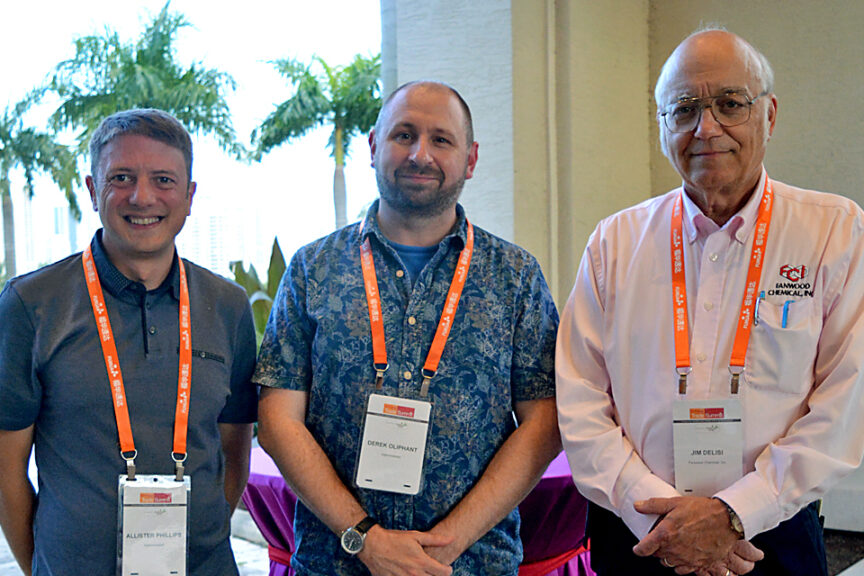
Allister Phillips, Co-Founder of AgbioInvestor, Derek Oliphant, Co-Founder of AgbioInvestor, and Jim DeLisi, President of Fanwood Chemical at cocktail reception on 9 August.
-
18 of 20
Trade Summit 2023
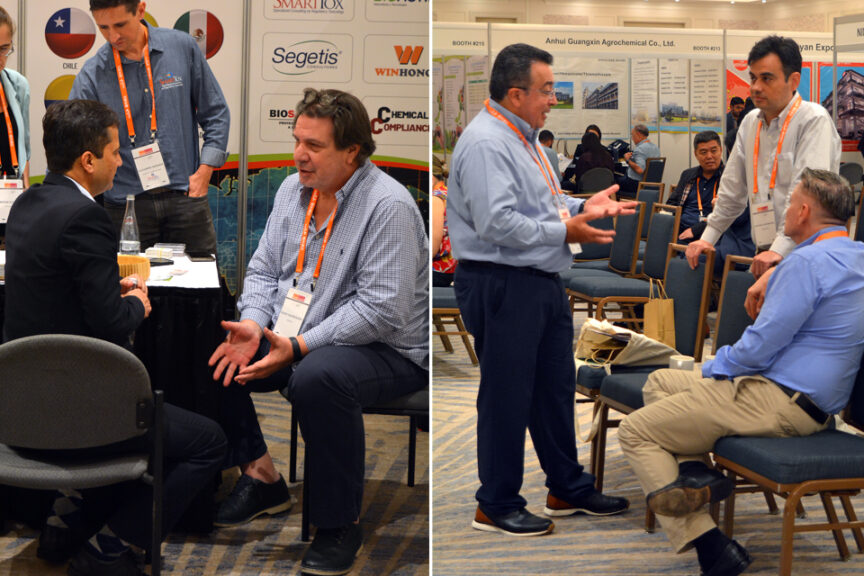
Attendees networking at booths and between panel discussions on the trade summit exhibit floor.
-
19 of 20
Trade Summit 2023

Mariola Kopcinski, Global Business Manager Agrochemicals, for Ingevity sharing insights during the biologicals panel discussion that included Pedro Juan, Head of Food Chain Management for Certis Belchim (far right) and Stephen Pearce, Co-Founder and Managing Partner for Chemovateq Swiss Ag Investments (not shown in photo), moderated by Dan Jacobs, Senior Editor, AgriBusiness Global (far left) on 10 August.
-
20 of 20
Trade Summit 2023
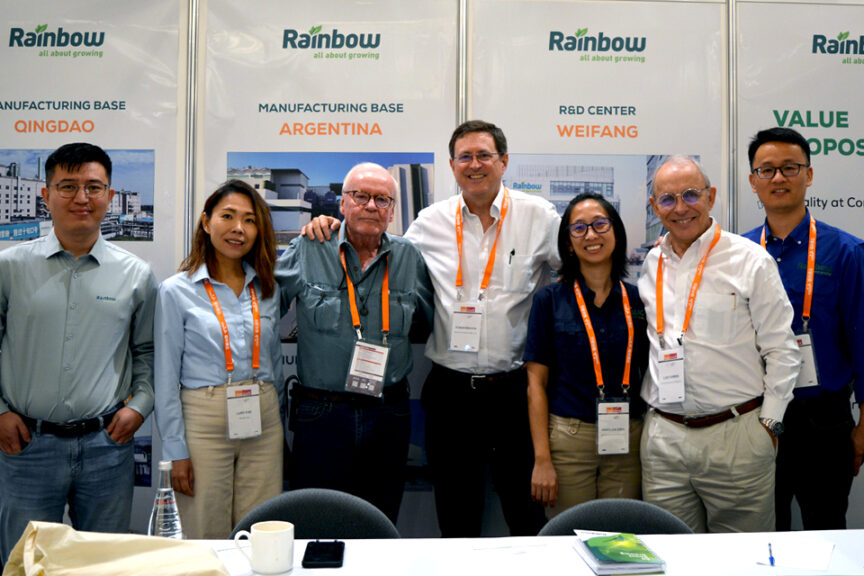
Rainbow and Agroquimica Industrial staff share a group photo.
View all
Trade Summit 2023
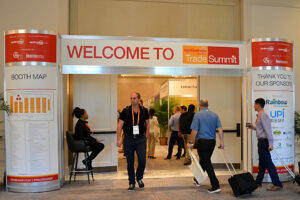
Trade Summit 2023

Trade Summit 2023
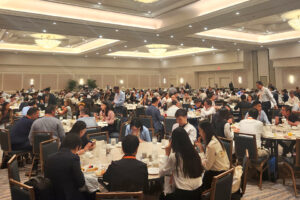
Trade Summit 2023
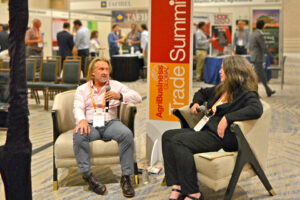
Trade Summit 2023
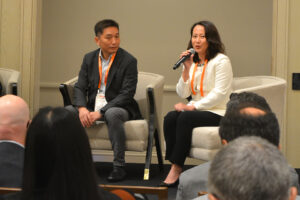
Trade Summit 2023

Trade Summit 2023
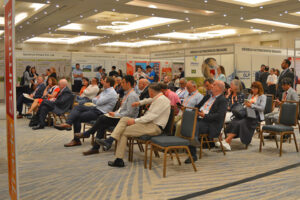
Trade Summit 2023

Trade Summit 2023
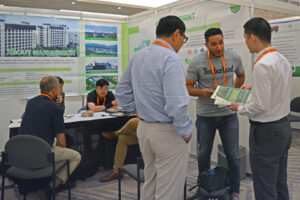
Trade Summit 2023
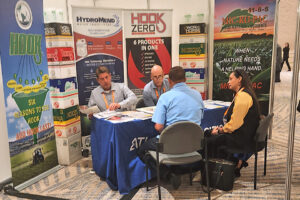
Trade Summit 2023
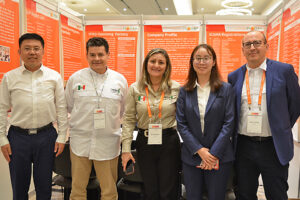
Trade Summit 2023
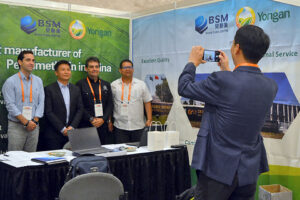
Trade Summit 2023
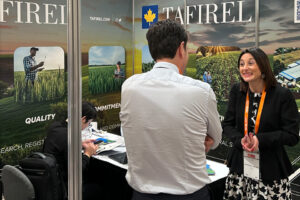
Trade Summit 2023
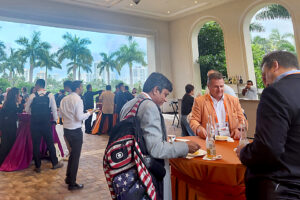
Trade Summit 2023
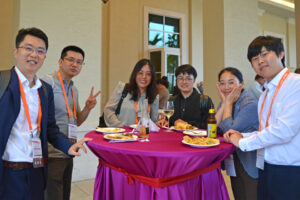
Trade Summit 2023
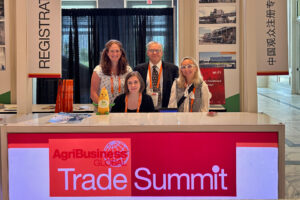
Trade Summit 2023
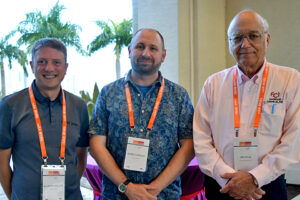
Trade Summit 2023

Trade Summit 2023
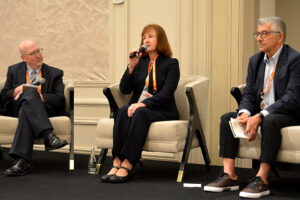
Trade Summit 2023

By AgriBusiness Global Staff
AgriBusiness Global gathered more than 800 agrochemical representatives for the AgriBusiness Global Trade Summit in Aventura, Fla., 9-10 August, bringing together participants from around the globe for making deals and see old friends.
The 2023 Trade Summit event kicked off with a pair of keynote speaker — Allister Phillips and Derek Oliphant, both Co-Founders of AgbioInvestor. Phillips looked at the marketplace for seed. Leading up to the COVID-19 years, seeds sales globally were in a bit of a decline, he said.
“When you look at the numbers, treated seed was worth less in 2019 than they were in 2014,” said Phillips. Fortunately, the market began to pick back up during the 2020 and 2021 growing seasons, with seed sales globally growing 2.6% during this time frame.
Phillips provided an overview of the market and expectations for the coming season.
Looking ahead to 2023, the forecast for seed sales globally looks to be another 5.9% overall increase. All regions of the world are projecting segment growth with the exception of Europe, where declines in acreage for corn and sunflower is expected to drop overall seed sales 8% this year. As in 2022, global seed sales are anticipated to be strongest in North America and Central and South America, increasing 8.5% and 13%, respectively.
“In North America, high energy prices and relatively high commodity prices have continued the rise in average seed prices,” said Phillips. “And there’s a greater market share for Enlist 3 soybeans.” He added that Enlist supplier Corteva estimates these soybeans now account for 55% of the entire soybean seed marketplace.
Following Phillips, AgbioInvestor’s other Co-Founder, Derek Oliphant, spoke with 2023 Trade Summit visitors about the outlook for global crop protection. Although much has been made about agrichemical companies experiencing sales downturns, Oliphant said market observers need to consider on-the-ground crop protection product usage rather than relying solely on larger trends.
“Inventories were built up due to high levels of pre-purchasing to alleviate supply concerns and unfavorable mid- to late-season weather on key regions, such as the Western U.S. and Europe,” he said. “Retailer and on-farm stocks are now being used, with usage on the ground sustained due to relatively high pest pressure and improved conditions in regional markets. Company sales are also being impacted by an overall reduction in agrichemical pricing.”
When all is said and done, Oliphant told Trade Summit attendees the prediction for crop protection market sales for 2023 is $76.8 billion, an improvement of 2.8% compared with 2022 growing season. Market growth will be led by Europe at 6.1% and Central and South America at 6.3%.
Read more about the keynote presentation.
Global RegulationsFollowing the keynote presentation were two days of educational sessions focused on critical issues facing the crop inputs community. Kicking off the education sessions AgriBusiness Global Editor Renee Targos was joined by three leading China experts focusing on that country’s agchem future. The discussion “China Update: Foresight of China Agrochemical Supply” featured David Li, Marketing Director, SPM Biosciences; Norman Wu, Commercial Vice President, CAC Nantong Chemical Co., Ltd; and Adrienne Chang, General Manager, International Business, Sino-Agri Leading Biosciences, Ltd., Co. “China has the (most) complete, integrated production lines in the world in terms of production capability,” Chang said. To achieve that goal, the country’s manufacturers must first overcome issues exposed during the years’-long pandemic including huge stockpiles caused by panic buying and fears of higher prices throughout the supply chain. “The first half of 2023 was quite abnormal. Chinese suppliers reduced output because of high inventories in the different layers throughout the supply chain,” Wu said. Li agrees the start to 2023 was challenging. “We are facing very tough situations,” he said. Read more from Li, Wu, and Chang |
Bridging the Biological/Chemical Divide
While synthetic products comprise the vast majority of crop inputs, if there’s one topic folks in the agricultural industry have talked about globally over the past decade or so, it’s biologicals. Ever increasing amounts of money are being invested in research, which has led to greater efficacy and increased adoption.
That said, market acceptance for these products has tended to lag somewhat, particularly in some segments of agriculture, particularly in row crops. Then of course, there’s the market perception that biologicals and synthetic chemistries don’t play well together.
“There’s still a belief that biologicals are not conforming to the requirements of regular chemistries,” said Mariola Kopcinski, Global Business Manager, AgroChemicals at Ingevity. “This is because most biologicals are preventatives and dependent upon field conditions. Also, because biologicals tend to help plants get stronger or grow and are not killing pests.”
According to Stephen Pearce, Co-Founder and Managing Partner at Chemovateq Swiss AG Investments, another reason for this lack of penetration in row crops ties back to scaling. “Right now, biologicals are largely deployed in high value crops,” said Pearce. “Part of that is the difficulty experienced in the scaling of the products. Until this side of manufacturing improves, it will remain a challenge for biologicals to gain traction in row crops.”
Still, there are market positives in view. According to Pedro Juan, Head of Food Chain Management at Certis Belchim, certain European markets are embracing biologicals. And according to Ingevity’s Kopcinski, biologicals are being used regularly by growers in Brazil as part of their seed treatment practices.
Learn more about the biological/chemical divide.
Surviving Black Swan EventsWhen it comes to the unpredictable weather conditions, growers are aware, and perhaps expect to experience interruptions and have some tools to mitigate the extreme effects. It’s “other” unexpected disturbances, Black Swan events, that often disrupt the industry. Bob Trogele, Chief Operating Officer/Executive Vice President, AMVAC, shared his thoughts on recent Black Swan events that affected 2023 and his outlook for 2024. Pricing changes led to huge stockpiles of primarily herbicides throughout the value chain. Everyone from distributors, through retailers and down to the farm level wanted to be caught without product availability. As they work through those stocks, the new challenge will be deciding when to purchase new material. The Russian invasion of Ukraine was another disruptive concern causing fertilizer prices to skyrocket. While the prices have abated some, the ongoing conflict will still have an impact well after the conflict ends, Trogele said. “A lot of the infrastructure is destroyed; more of the infrastructure is being destroyed,” he said. “And there’s still the problem of mines in the fields. There’s still the problem with transportation. From a supply side, the Ukraine will be off the radar another 36 to 48 months.” Other black swan events included the U.S. banking system — as Trogele put it, “When the U.S. catches a cold, the rest of the world ends up in critical care” — South America, specifically Brazil, and China . “Where is the Chinese economy going,” Trogele asked rhetorically. “We’re all waiting for a reset.” When talking with bankers in the U.S. he’s told the U.S. is expected to experience a soft landing. “If China doesn’t come back, it will have shockwaves through the rest of the world because we’re so interconnected.” Learn more about Trogele’s Black Swans and his advice for navigating through them. |
Glyphosate-DeLisi
Shortly after Trogele’s session, Jim DeLisi, Owner, Fanwood Chemical, picked up on concerns about the oversupply suggesting the amount of a pair of popular herbicides currently stockpiled throughout the supply chain could last for years.
“In the case of glyphosate and glufosinate, there’s probably enough inventory to last into 2024 already here,” DeLisi told the crowd. “Last year, there’s no doubt, there was a bubble in herbicides. A lot of it was caused by people who were really concerned glyphosate was not going to be there.
“Prices ran up pretty high through January then they started to crash,” DeLisi continued. “There are an awful lot of folks sitting on an awful lot of expensive inventory.”
For glyphosate and glufosinate, DeLisi doesn’t expect the inventories to return to more normal levels until 2024. For other herbicide products many import companies “hit the brakes hard in April and May, and they may have hit them harder than they needed to be hit.”
Read more of DeLisi’s thoughts.
Drones and FormulationsHow those herbicides, and many other products will be applied is changing. For quite some time the agricultural community has increasingly embraced one technology over many others: Drones. Arthur Erickson, CEO and Co-Founder of Hylio, Inc., agrees with this assessment. “It used to be a challenge to get farmers to try drones,” he said. “Fortunately, there are so many drones out there now that people in the industry have seen them in action for themselves. So, we are now past the education stage for drones. We are now in the competitive stage, where potential customers are asking ‘why is your drone better than the other guy’s?’ That’s true capitalism.” While unmanned aerial systems might be the wave of the future crop input manufacturers will need to adopt new formulations to adapt to this newer way of applying products. Scott Tann, North America Business Manager at Lamberti USA, suggests the most pressing of these concerns could be droplet size. “There are some formulation problems the industry will have to overcome,” Tann said. “Everyone using drones is looking for smaller droplets to reduce drift potential, but smaller droplets tend to dry out very quickly. To work properly, droplets need to have a liquid nature to them.” He added the use of surfactants might provide some help with this issue. Outside of the U.S., drone usage has become even more popular. According to Dr. Piyatida Pukclai, Regulatory Policy Manager at Knoell, Asia is a particular hot spot for drones these days, with countries such as Japan, South Korea and China leading the way. “In Japan, there have been many drones being used for agriculture for more than five years now,” said Pukclai. Read more about Pukclai’s, Tann’s, and Erickson’s insights on UAVs. |
Insights Into India
And coverage of the world’s crop protection market would be remiss if it didn’t include discussions about India, which moved from the sixth to second largest producer of crop inputs in the course of a few years, explained Abhijit Bose, Chief Marketing Officer, Tagros Chemicals India Pvt Ltd.
Bose was joined by Narayanan Nair, Head of Intl. Sales & Marketing, Gharda Chemicals, during the “India Update: Expansion, Backward Integration, and Ag Tech” session.
While much of the world view China and India as competitors for the crop inputs market, Bose and Nair recognize that each country has its strengths and view any competition as a healthy way for both countries to prosper.
“Today, in terms of manufacturing, China is the largest manufacturer petrochemical in the world. India has emerged as the second largest exporter of petrochemicals in the world in the last 20 years, moving up from sixth place,” Bose said. “China and India coexist as the number one and number two manufacturers and exporters to the rest of the world.”
Nair agreed.
“It’s not a competition,” he said. “China has its own strengths.” Nair went on to highlight India’s advances and the technological capabilities of the countries manufacturing segment.
Nair and Bose had more to say about India.
A Regulatory UpdateAnother indispensable topic for crop input manufacturers is the regulatory environment around the world. The “Global Reformation of Regulation” session featured Dr. Piyatida Pukclai, Regulatory Policy Manager, Knoell; Alexandre Quesada, Executive Director/CEO, SmartTox Consulting Company; and Robert Kiefer, General Manager, REACH24H USA Inc., and attempted to get a handle on the current regulatory environment. One oft discussed, but rarely implemented on any large scale, approach – harmonization – was quickly dismissed by the group. “At least from a harmonization standpoint, there’s not a lot of progress, with the exception of maximum residue limits,” Kiefer said. When it comes to the registration process in the U.S., the registration process is governed by the Pesticide Registration Improvement Act of 2022 (PRIA 5), which updated pesticide registration service fee tables in FIFRA Section 33(b)(3)(B). The discussion quickly moved to how various regulatory agencies are working to speed up the registration process globally. China, Kiefer said, takes a different approach. If the Chinese government could accept OECD reports (The Organization for Economic Cooperation and Development), it would significantly reduce testing time for foreign companies,” Kiefer continued. “However, at the present, Chinese authorities they do not recognize OECD GLP reports and they still have a long way to go.” Whether it’s a biological or traditional pesticide every regulatory agency requires a variety of information including toxicity assessments and efficacy trials. Different countries require a different number of trials, said Pukclai, who focuses on Southeast Asia. Finally, the trio discussed the cost of registering products in various countries around the world, varying greatly from USD$12,000 to USD$100,000 or more. • Read more about regulatory issues around the globe. |
